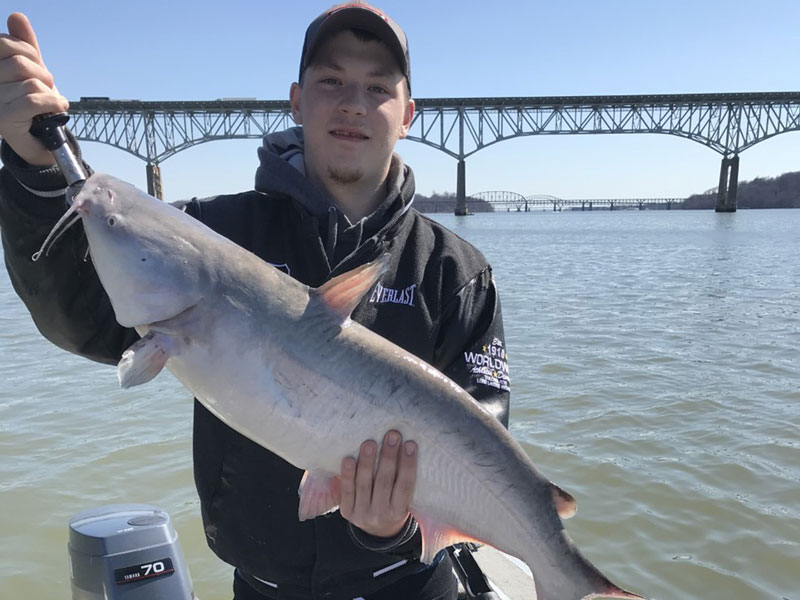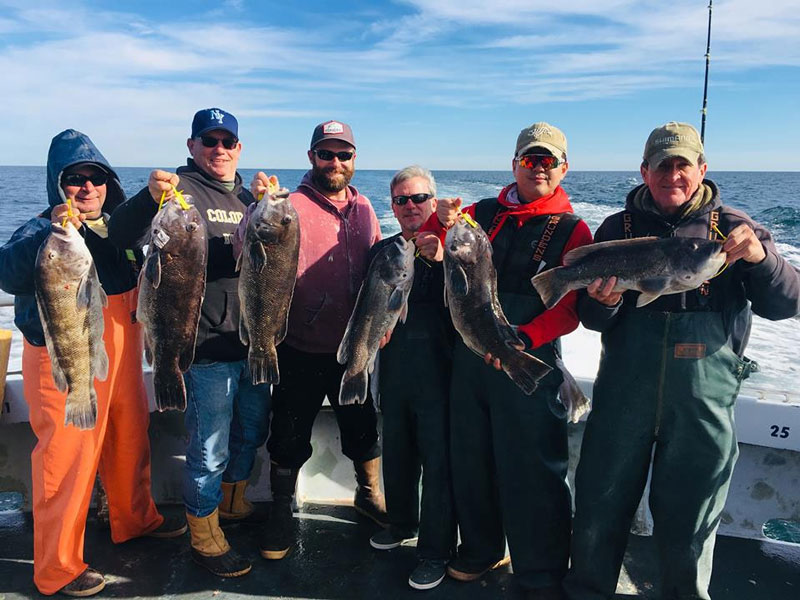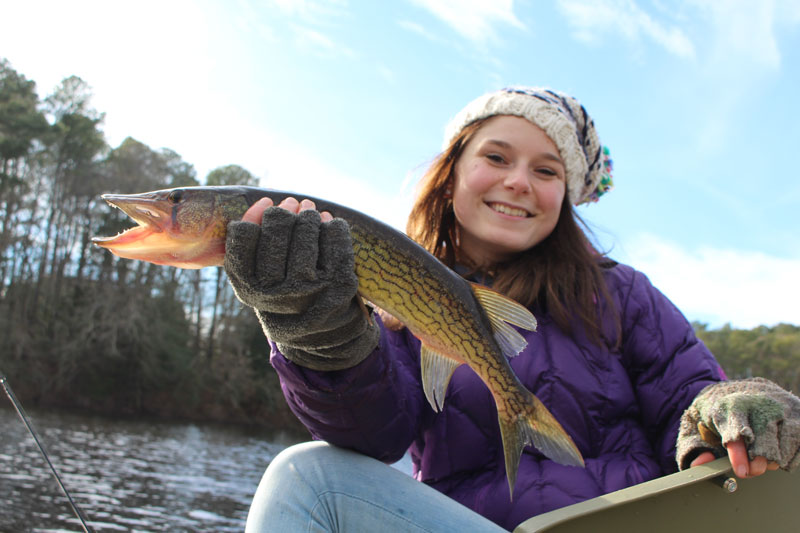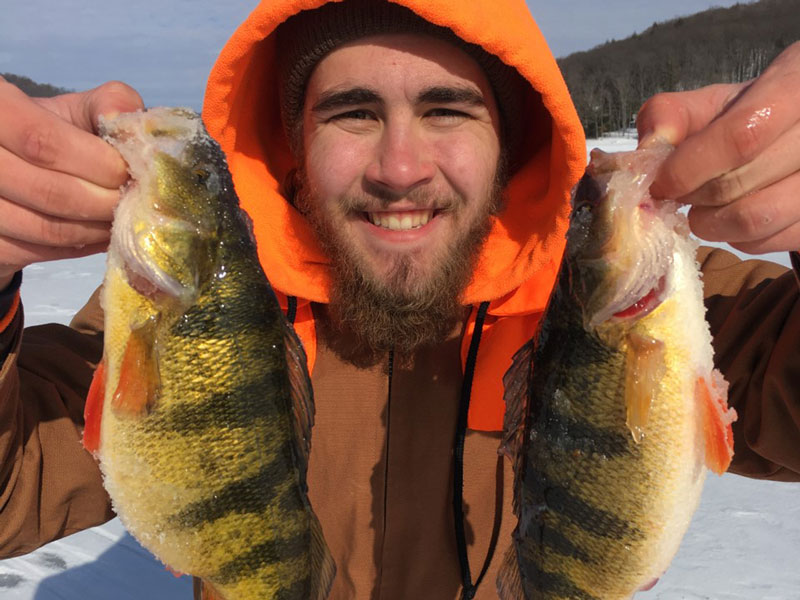Maybe there’s a warm day being forecast and you want to take advantage of the decent weather. Maybe you heard there’s an unexpected bite going off and you don’t want to miss out. Or, maybe you’re just sick and tired of being cooped up and you need to get outside and take a cast or two regardless of the frigid conditions. Fortunately for we Chesapeake dwellers, fishing season never ends around here — never. Try one of these arctic adventures and whether you load the cooler or not, we’re betting you’ll be glad you got off that couch.

Susquehanna Blue Catfish and Yellow Perch
Through the winter months you’ll pretty much always have a shot at scoring blue catfish and/or yellow perch in the lower Susquehanna River. Anywhere from Lapidum down to Havre De Grace can be productive, with most of the action taking place in the deep channels and holes. There are several public boat ramps in this stretch (Lapidum, Perryville, and others), providing easy access for watercraft of all shapes and sizes. There are also a number of public access parks and piers, such as Lower Ferry Park and Perryville Park.
Which species should you target? Savvy anglers who simply want to feel a wintertime bend in the rod will arrive armed for both. While the catfish swimming in these waters are usually among the species most willing to bite, fronts and pressure changes can throw a kink into their behavior. And the yellow perch bite can swing from awesome to absent, sometimes from one day to the next. So, arriving here prepared to chase both is a good move. Bring a large rig for the catfish; figure a medium to heavy action rod in the 20- to 30-pound class, and fishfinder rigs with 8/0 to 10/0 circle hooks on 30- to 40-pound test leaders. Cut fish and chicken livers make great baits. For the perch a light or ultralight rig is in order. Four- to eight-pound gear works well, and locals like to drop down tandem rigs with darts, hair jigs, marabou jigs, and similar offerings, usually tipped with a live bull minnow. Note that in many areas here currents can be strong, and you may need to weight down the rig.
Winter Weather Tip: Watch out for heavy rainfall or melt-off, especially on warm days following snowfall, both locally and also upriver in Pennsylvania. When the river swells and runs muddy the fishing can shut off rather abruptly.

Ocean City and Virginia Beach Tautog
Tautog are temperamental fish, but at the wreck and reef sites off the coast they’ll bite right through the winter no matter how frigid it gets. And they’ll be at the CBBT, too, although when the water temperatures get below 50 the action drops off and below 45 or so degrees they stop biting entirely. If you have an ocean-capable boat that’s ready for winter action you need only be ready to roll at the sign of a good weather window. Many anglers, however, will jump on one of the charter or head boats running out of OC and Virginia Beach. There are plenty to choose from, and unlike the average recreational fishing boat, they have heated cabins — a huge bonus on the open Atlantic during winter!
On the charters and head boats gear and bait is generally provided, but if you choose to bring your own remember that long, stiff rods are favored. Some extra length allows you to raise and lower the rod tip as the boat rocks in the waves, to prevent lifting the sinker off bottom (a big no-no for tog). And you need some beef to quickly yank those fish away from the structure they like to hide in before they can tangle your line up in the wreckage.
Winter Weather Tip: It’s utterly critical to bring and wear tall, waterproof boots, even on the larger head boats. If your feet get wet thanks to a spraying washdown hose or a sloshing scupper, your day of fishing will come to a screeching halt.

Eastern Shore Millpond Pickerel and Bass
Unless ice forms over their surfaces, the Eastern Shore millponds offer anglers action from pickerel and bass which can be shockingly fast-paced for fishing in the middle of the winter. Pickerel in particular regularly go on midwinter rampages, and the bass action may not be “hot” but it often makes the grade as “decent.” Yellow perch and crappie will bite at times, too.
Most (though not all) of the ponds have boat ramps that can accommodate kayaks up to 16-footers and in some cases larger boats, as well as shoreline access and/or fishing piers. There are dozens of these ponds peppering the Shore from Delaware down to Virginia which you can locate via state agency websites, but we ID eight top picks and give the location and lowdown for each in Eastern Shore Millponds: Fantastic Freshwater Fishing.
Winter Weather Tip: On clear, calm days, during the afternoon hours be sure to probe the northwestern shorelines. Since the winter sun rises in the east and tracks through the southern sky, afternoon water temps along northwestern areas get maximum exposure and may be a couple degrees higher than the rest of the pond.

Out West Ice Fishing
Considering how warm our winters have been in recent years this option may be a longshot, but the mountain lakes to our west and in southern Pennsylvania do freeze up hard enough for ice fishing at some point most winters. And when it does happen, it gives us an opportunity to fish like those cheese-heads and Yoopers.
If you have ice fishing rigs with augers, tip-ups, and ice rods, you’re all set; now all you need is some ice jigs, mealworms, and live shiners. If you don’t, however, there’s no need to break the bank buying a bunch of gear for a once-a-season trip like this. As we spell out in “Cheap and Easy Ice Fishing,” (yes, you’ll find that one on the website, too), you can make a spud (an ice chipper) to pop open holes by duct-taping a screwdriver to the end of a ski pole or broomstick. You can buy one of those cheap mini-rods and add a spring bobber to the tip to give it the sensitivity needed for ice jigging for panfish, or you can make an ice rod by epoxying the end two feet of an old ultralight to a rod handle. Any ultralight reel will work as long as it’s spooled with two- to six-pound test; use the super-light stuff for panfish and go heavier for larger fish, but remember that in the gin-clear water those fish can be very leader-shy. And you can use an old strainer spoon to clear out your ice holes (but grab a plastic one, not metal, or the mesh often freezes solid).
As far as tip-ups go you’ll have to shell out some cash, but these aren’t must-haves and you can always just fish your rods. Remember to jig in slow motion, as most of the piscatorial popsicles swimming around down there will be quite lethargic and a quickly jerked lure or bait doesn’t look very realistic at all. Open up a hole or two in a likely looking area where there’s structure, an underwater point, or submerged weedbed, and keep on the move until you start getting bites. And don’t be afraid to open up someone’s old ice holes, especially if there’s evidence that they stayed in the spot for a long time. When you see bait bits, weed sprigs, and the little wood chips that mealworms are often packaged with scattered around on the ice, it’s a dead giveaway that someone else recently found the spot productive enough to stick around.
Winter Weather Tip: Especially if you’re inexperienced, you should wait for a deep-freeze before venturing out on the ice. Three-inch-thick ice is considered bare minimum for safety and cautious people look for four or more inches. Pop a hole open a few feet from shore to test the thickness, before going any farther.
Long Johns? Check. Coffee thermos? Check. A burning desire to catch some fish? Check and triple-check — get out there this winter, and break that cabin fever by bending some rods.